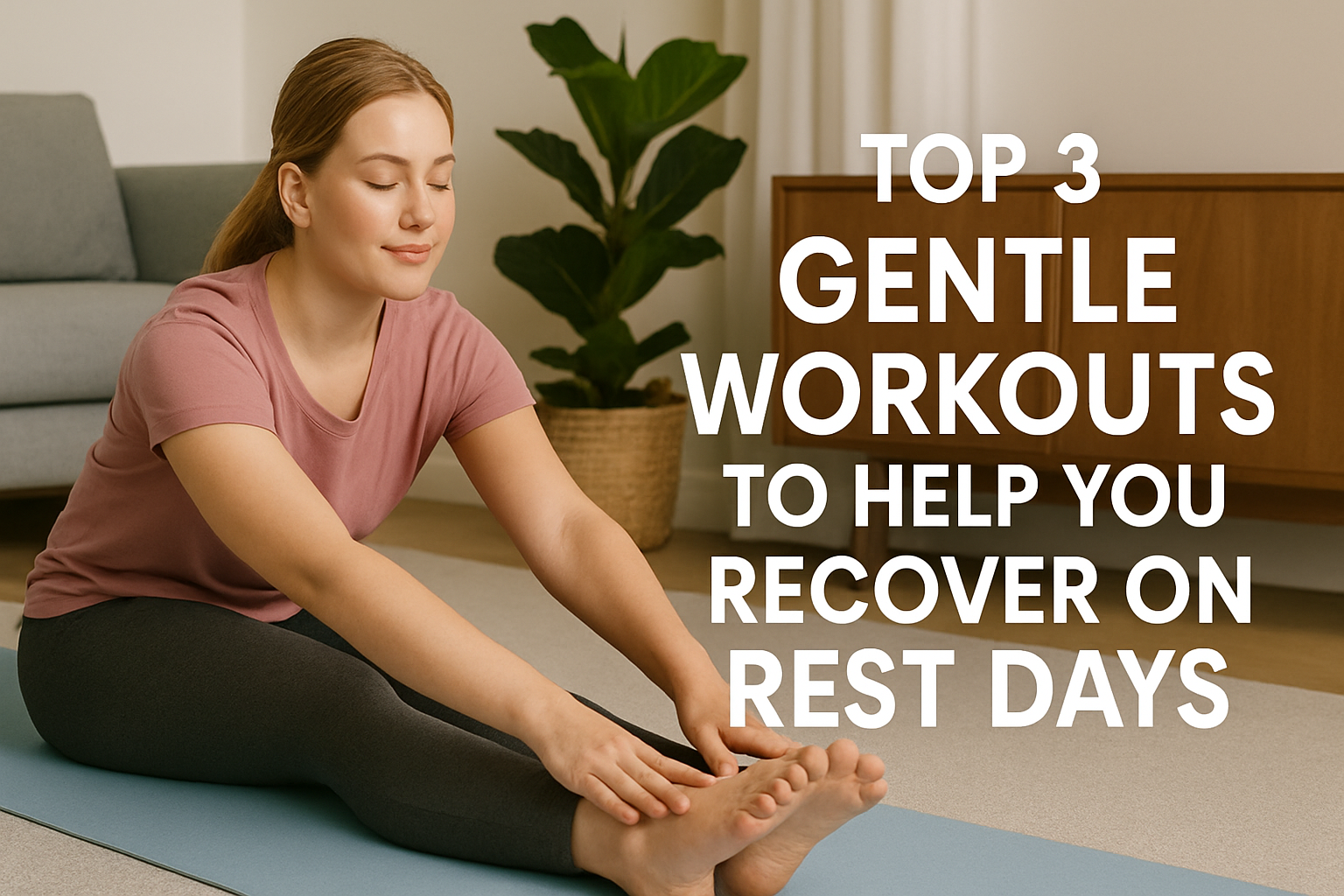Rest days don’t always mean complete stillness. In fact, incorporating active recovery—low-intensity movement that promotes blood flow and reduces muscle soreness—can help your body bounce back faster, improve mobility, and keep you mentally focused. Whether you’re sore from a tough workout or just need to reset your body without the strain, active recovery is the perfect solution.
In this article, we’ll explore three effective active recovery workouts that can be done on your rest day, offering physical restoration without overtaxing your body.
Why Active Recovery Matters
Active recovery is a key component of a well-rounded fitness routine. It bridges the gap between training and rest by encouraging light movement to:
- Improve circulation
- Reduce stiffness and soreness
- Prevent injury
- Enhance flexibility and mobility
- Support mental clarity and stress relief
These sessions are not meant to exhaust you, but rather to gently stimulate your body so it can heal and recharge efficiently.
1. Low-Impact Cardio: Walks, Cycling, or Swimming
Duration: 20–45 minutes
Intensity: Low (conversational pace)
Engaging in light cardio like walking, swimming, or leisurely biking is one of the simplest ways to stay active while giving your body a break. These low-impact movements elevate your heart rate just enough to increase blood flow, helping your muscles receive the oxygen and nutrients they need to repair.
Benefits:
- Flushes out lactic acid buildup from intense workouts
- Promotes joint health and endurance
- Reduces inflammation and muscle tightness
Tips:
- Choose flat terrain if walking
- Stick to a relaxed pace
- Swim in a calm, unstructured way—think of it as movement therapy, not a workout
2. Yoga or Mobility Flow
Duration: 20–40 minutes
Intensity: Gentle to moderate
Active recovery days are ideal for improving your flexibility and mobility. A light yoga session or mobility flow can ease tension, support joint health, and calm your nervous system. These movements focus on elongating tight muscles and improving your range of motion.
Types to Try:
- Restorative yoga
- Vinyasa or slow-flow yoga
- Guided mobility routines focused on hips, shoulders, and spine
Benefits:
- Enhances balance and posture
- Improves circulation and lymphatic drainage
- Calms the mind and relieves stress
Tips:
- Hold stretches for 30–60 seconds
- Focus on breathing deeply to support recovery
- Avoid high-intensity yoga styles like Power or Ashtanga on these days
3. Bodyweight Stretching & Core Activation
Duration: 15–30 minutes
Intensity: Low and controlled
Stretching and gentle core work can be incredibly therapeutic after a hard training cycle. These movements activate stabilizer muscles and maintain functional strength without putting stress on your joints or nervous system.
Sample Routine:
- Cat-cow stretches (spinal mobility)
- Bird-dogs (core + balance)
- Glute bridges (hip and lower back support)
- Dead bugs or planks (gentle core activation)
- Seated hamstring and quad stretches
Benefits:
- Keeps stabilizing muscles engaged without fatigue
- Improves muscle coordination and control
- Aids in posture correction and injury prevention
Tips:
- Focus on slow, controlled movement
- Pair each stretch with deep breathing
- Use foam rollers or massage balls for added muscle release
Putting It All Together: Weekly Recovery Plan Example
| Day | Recovery Focus |
|---|---|
| Monday | Strength Training |
| Tuesday | Active Recovery (Mobility + Walking) |
| Wednesday | HIIT or Cardio Training |
| Thursday | Active Recovery (Yoga + Stretching) |
| Friday | Strength Training |
| Saturday | Rest or Gentle Core & Walk |
| Sunday | Full Rest or Meditation |
Final Thoughts
Rest days are a vital part of every fitness journey—but rest doesn’t always mean lying on the couch all day. Light, mindful movement can enhance your recovery, improve your performance, and help you feel energized and balanced. Whether it’s a slow walk, a calming yoga session, or gentle mobility work, active recovery supports your body in becoming stronger, more flexible, and more resilient.
The next time your schedule calls for a break, try one of these three workouts to help your body recover—and thank you for it.
